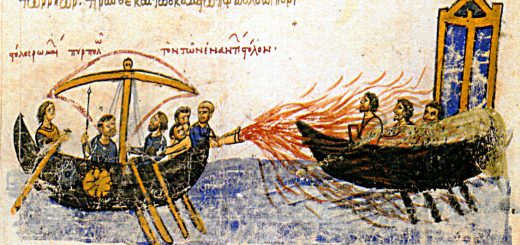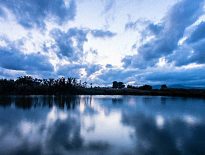Michael Masters – Swimming Through The Markets

Today’s post is a profile of Guru investor Michael Masters, who appears in Jack Schwager’s book Stock Market Wizards. His chapter is called Swimming Through The Markets.
Contents
Michael Masters
Michael Masters appears in Jack Schwager’s book Stock Market Wizards.
- His chapter is called Swimming Through The Markets.
Early days
Masters first got interested in the markets in the 1970s.
- His dad was a trader, focused mostly on shorting.
He taught me the importance of taking profits, the idea that a profit isn’t real until it is realized.
Masters also had two uncles who were traders.
They taught me the importance of discipline. If you have a loss, get out.
Master went to college on a swimming scholarship.
I went to the Olympic trials, but I didn’t make it. I came down with the mumps the summer before the trials, and I didn’t have enough time to get back into peak condition. I would, however, have ranked high enough the year before to have made the team.
He intended to be a doctor, having run into a plate glass window as a child and been impressed by the doctors at his hospital.
- Swimming was originally part of his childhood physiotherapy.
But Masters lost interest in medicine.
I took some finance courses, which I really enjoyed, including an investment course that was tremendous, and I switched my major.
After college, Masters needed work experience to get into business school, and applied to work as a broker.
I was given a list of people to cold-call. It was real difficult to do. I also did cold-call visits with one of the other trainees.
After I had been in the business for a while, I figured out that I wanted to be on the managing side, not the selling side. The company, however, wanted you to sell financial products.
Religion
Masters is religious:
Believing in a higher power gives me the strength to deal with the losses that are an inevitable part of this business.
This obviously won’t help any atheist readers.
Marlin
When Masters was fired after five years as a broker he decided to start his own fund – the Marlin fund.
I reached a point where the trading in my own account was becoming reliably profitable, and I felt I was ready to go out on my own.
I wasn’t comfortable being a broker anymore. Anytime you’re trying to make money for both the firm and the client, there is a built-in conflict. 1 wanted to manage money on a performance basis.
The fact that I had competed successfully at the highest levels of swimming gave me confidence that I could excel in this business as well.
Marlin had grown to half a billion dollars – and was closed to new investors – when Schwager interviewed Masters in 2000.
Performance
The Marlin fund averaged 86% pa compounded return, with only three losing months and none worse than 3%.
Trading style
Marlin has a very high turnover of positions, and Masters is locked in his trading room during trading hours (he won’t take phone calls).
We make lots of trades, and I make mistakes all the time. We just get out, usually right away.
We stand portfolio theory on its head. We actually try to take unsystematic risk by being in stocks when the unsystematic risk is high relative to the systematic risk (that is, at times when the stock’s price movement will be more influenced by company-specific events as opposed to directional movements of the stock market as a whole).
Our net position averages about 40% net long and has ranged between 90% net long and 10% net short. A typical breakdown would be 50 percent long and 10 percent short, with the remainder in cash.
We look at our business like a grocery store. You can get leverage in two ways: by taking on larger positions or by turnover.
We’re constantly getting inventory in and moving it out the door. If we have a piece of meat that’s going bad, we mark it down to get rid of it.
The average trade is held for two to four weeks, and 70% of trades are profitable.
Catalysts
One thing that helped me tremendously was writing the software for my trading ideas. I started focusing on catalysts. Our whole focus is looking for catalysts. It’s not just part of our strategy; it is our strategy.
A catalyst is an event or an upcoming event that has the potential to trigger a stock price move by changing the market’s perception about a company. Most catalysts are repetitive events – earnings, same-store sales, load factors.
We are trying to increase the probabilities of a trade being successful as much as possible.
Earnings surprises
Stocks with positive earnings surprises tend to outperform the market. An “earnings surprise” is defined by academics and Wall Street as a number that is above or below the consensus estimate by some minimum margin.
Whether an earnings surprise is discounted or not, however, depends on the price trend before the report’s release. If a stock goes up 10 points in a flat market during the week prior to the earnings report, and earnings are reported as only a nickel better than the consensus, it’s probably already discounted.
By considering the price trend before the earnings release of the earnings report and the magnitude of the surprise, you can significantly increase the probabilities of a successful trade.
The stock price will go up, but usually it will not fully discount the change. The market doesn’t discount all information instantaneously.
Time stops
For every trade I put on, I have a time window within which the trade should work. If something doesn’t happen within the time stop, the market is probably not going to discount that event.
Technical analysis
We use technical analysis not because we think it means something, but because other people think it means something.
We are always looking for market participants to take us out of a trade, and in that sense, knowing the technical points at which people are likely to be buying or selling is helpful.
Trade journal
I hardly ever hand out any business cards because I am not in marketing. Instead, I use the back of my business cards to jot down trade lessons.
I believe that writing down your trading philosophy is a tremendously valuable exercise for any investor. It helps clarify your thought process.
The most important advice I can offer investors is: Have a plan. Know why you are buying a stock, and know what you are looking for on the trade.
Conclusions
I didn’t get too much from this, other than that positive earnings surprises which haven’t already been discounted will lead to a price increase beyond the day of the announcement.
- I think Minervini says something similar.
The emphasis on learning from your mistakes is good, as is the idea that you need a plan (in advance) for each trade.
- Will you exit at a profit target, using a (trailing) stop loss, or will you use a time stop?
Taking the high-probability trades is also a good idea, but how do you identify them?
- You first need to find characteristics with predictive value, which is easier said than done.
Until next time.



















